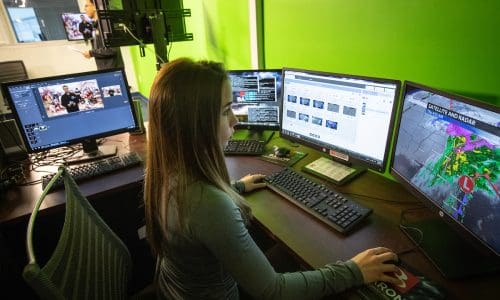

Nowcasters constantly monitor weather data and perform detailed mesoscale analysis. This allowed the tour leader to discuss the weather synopsis with our nowcasting team. Mobile phones were growing rapidly in popularity, but were still overly expensive to use “per minute.”ĭuring a typical storm chase in the 90s and early 2000s, we made several stops in order to use a payphone. Most of the technologies we use today simply didn’t exist. In the late 90s, the Internet was still in its infancy. Every team member can easily communicate and collaborate to create a top-notch forecast that works to our advantage.

Our meteorologists are constantly analyzing forecasting data while we are conducting our tours. What really sets us apart however is our ability to interpret forecast data to create the most accurate forecasts! Not every member of our team will physically participate on our storm chasing tours. We don’t have this problem since we use our own private servers to get the data we use! As always our technology is state-of-the-art we even have the ability to use a tablet to control, operate and manipulate our servers from anywhere in Tornado Alley! We use Private Data Feedsįrom time to time, public data feeds from the National Weather Service or commercial vendors may crash during high demand as loads increase on public servers. Our servers then format these data to our specific needs and allow us to retrieve that data using commercial software. We obtain data from satellite connections at a datacenter.
BARON MOBILE THREAT NET RADAR SOFTWARE
They are also ingesting our own data feeds for the radar software that we use. Our servers constantly crunch data to create custom forecasting models with the exact severe weather parameters we want to see. The difference is, our version allows us to select only the parameters that we’re most interested in and as a result, creating a custom solution. This is the same software used by many government weather forecasting offices. Our servers run software designed for linux called GEMPAK that create the tailored forecasting models that we use for successful storm interceptions. We lease and maintain our own weather modeling server that is continuously working in the background while we’re storm chasing. Our storm chasing team uses a combination of commercially available software and our own custom data products.
BARON MOBILE THREAT NET RADAR LICENSE
For those interested, that is FCC Element 8 on the General Radiotelephone Operator License (GMDSS).Īll storm chasers use a few common applications, which we will talk about below. Once that is done, any crew member who uses the radar in their duties to keep watch has to also have a “Radar Endorsement” on their personal FCC license. The first is that the vessel itself has to have a “Ship License” for the radar to be installed. Pertaining to marine vessels, there are several licensing steps that have to be completed to have an operational marine radar. It would be easy for him to use one of his radars on our storm chasing vans. And as a Master Captain, he understands marine and radio law very thoroughly. He also owns a fleet of commercial boats, each with a marine radar.īrian has the appropriate licensing from the FCC to operate these radar units on his boats. When he’s not chasing storms, he’s commanding seagoing voyages.

Our tour leader, Brian Barnes, is also a Master Captain, licensed by the U.S. The primary reason is that these units interfere with NWS operational radar as well as research radars that academia has deployed around a storm environment. The FCC does not grant licenses for marine radar antennas to be used on land, much less on land-based mobile platforms. They can’t even be used if the boat is dry docked, the vessel literally has to be in the water. They are intended to be used on boats, and boats only. The radar units that some tour operators are claiming to use are marine radar antennas. Licenses to operate mobile radar antennas are limited to government and academic research. It is a violation of section 301 of the Communications Act of 1934 and of 47 CFR § 80.13 FCC rules to operate marine radar on land (fines start at about $8,000). It is illegal to operate radar antennas from a vehicle without the proper licensing by the Federal Communications Commission (FCC). Some tour operators are either making false claims or violating several federal laws in regard to using radar antennas.


 0 kommentar(er)
0 kommentar(er)
